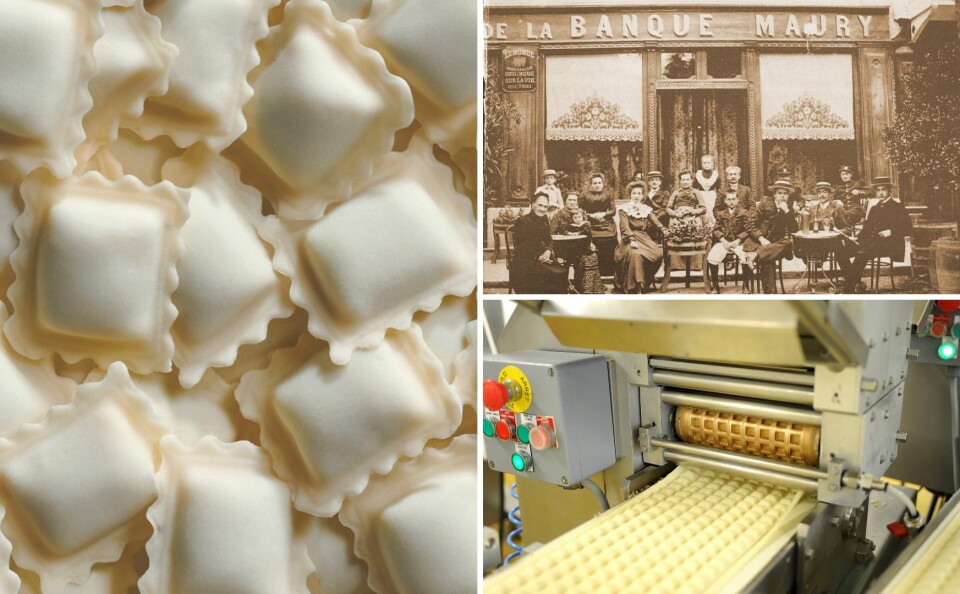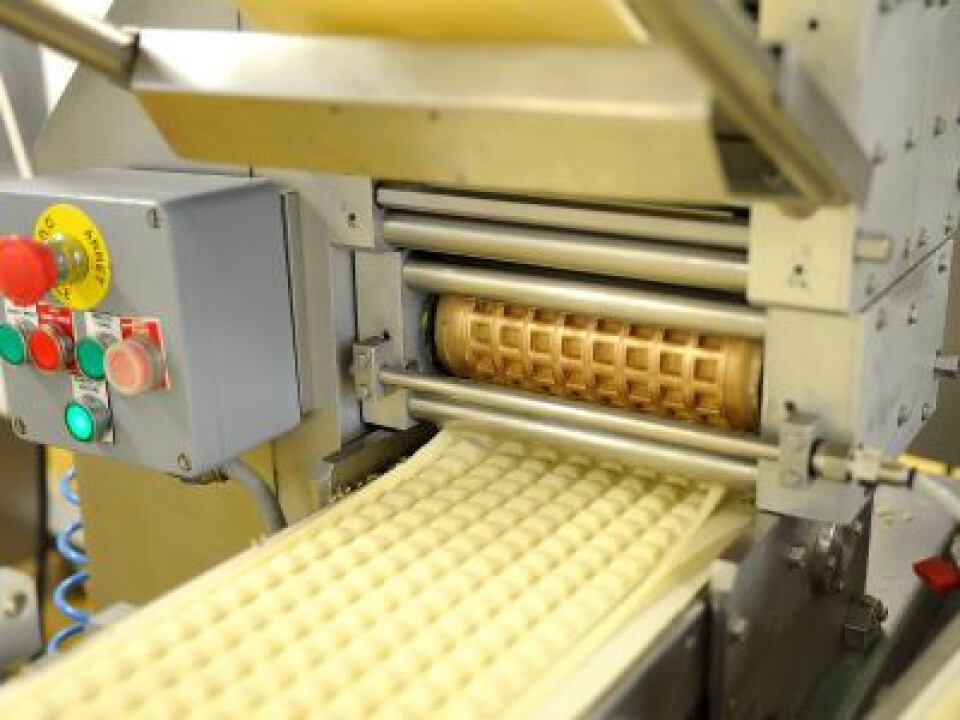-
Exclusive interview: New two-star Michelin chef Philippe Etchebest
Revisit our exclusive 2023 interview with the man behind Maison Nouvelle as he is rewarded in the 2025 Michelin Guide France
-
Map: Are there new Michelin star restaurants near you in France?
The new Michelin Guide France 2025 awarded 78 new stars to restaurants across the country
-
French people reveal their favourite dishes - what is yours?
Confit de canard, bouillabaisse, snails, crêpes, cassoulet…plus, how do you choose a restaurant?
How little French ravioli became part of the Dauphiné food heritage
Ravioles du Dauphiné are tiny parcels of pasta filled with cheese and parsley, quite different to their Italian cousins

Two hundred kilometres across the Alps from Turin as the crow flies, the Italian ravioli has a lesser-known French cousin: the “raviole du Dauphiné”, a culinary speciality of Romans-sur-Isère, in the Drôme, and Royans, a tiny neighbouring region.
It shares the ravioli’s shape, square with delicately jagged edges, but the similarity ends there.
The raviole is smaller (2 x 2.3cm), lighter, with a thinner dough and a light filling of cheese and parsley.
Lastly, ravioles are usually presented in sheets of eight rows of six ravioles that are simply slid into simmering water for 60 seconds to cook and separate.
The pasta is light and delicate
“Personally, I poach them for one minute and add a little butter which melts on top,” says Grégory Manoukian, co-manager of Ravioles Mère Maury, the go-to raviole producer in Romans.
“You can also add a very thin drizzle of crème fraîche and I like to grate a few strips of parmesan on top, which adds sharpness.
“And once you taste them, you discover the pasta is light and delicate, the filling smooth and flavourful. This is because the parsley releases its aroma as soon as it’s cooked.
“But to have this particular and fine taste which characterises the raviole, it must be made according to a precise recipe that has been passed down from generation to generation.”
Read more: What has been voted France’s favourite regional dish?
Introduced to France by Italian woodcutters
Of modest beginnings, raviole (pronounced “ra-vee-ohl”) is said to have originated around the 16th century in the dense Vercors forests, a mountainous massif near the French Alps straddling the Isère and Drôme departments.
Italian woodcutters from Piedmont who came there to work started making raviolis filled, in the absence of meat, with cheese and parsley.
French woodcutters were quick to imitate them and the first ravioles eventually made their way to Romans, the nearest town.
Locals later innovated by adding Comté, a cheese made in eastern France.
Read more: Tielle de Sète - Poor man’s pie that became a local French food icon
Women made the dish famous
In the late 19th century came the golden age of the “ravioleuses”, women who went from farm to farm making ravioles for family celebrations.
Then, in 1904, Marie-Louise Maury, daughter and granddaughter of a ravioleuse and nicknamed “Mère Maury”, started serving ravioles in her café and soon became the first cook to market them.

Photo:Grégory Manoukian, co-manager of Ravioles Mère Maury with portrait of Marie-Louise Maury; Credit: Ravioles Mère Maury
A true local celebrity and charismatic character, her success encouraged others to follow in her footsteps.
But the First World War dealt a blow to raviole consumption, ravioleuses gradually disappeared and by 1930, only a few restaurants in Romans served ravioles.
Machines made ravioles on larger scale
They might have fallen into oblivion if, in the 1950’s, Maurice Donnadieu, Mère Maury’s grandson and Emile Truchet, a disciple of hers, had not each invented machines to make ravioles on a larger scale.
Production was relaunched and Romans firmly established as the capital of raviole, one of the town’s emblematic gastronomic specialities alongside “pogne”, an orange blossom-flavoured brioche.
Today, there are barely half a dozen raviole producers left in and around Romans, including Mère Maury, which was bought in the 1990s by the Manoukian family.
Its great pride is using the original recipe and techniques bequeathed by Marie-Louise Maury.
How ravioles are made
The process is quite simple: flour, water, vegetable oil and whole eggs are mixed.
The dough is then kneaded and passed through a rolling mill several times so that it becomes very thin.
The filling, made from Comté cheese, blanched parsley, salt, butter, eggs and fresh cow’s cheese, is spread on top.
The ensemble is covered with a second sheet of dough and sealed to the first.
Using a mould, the ravioles are given their specific shape.
They are then refrigerated or frozen before packaging.
Keeping with traditional ‘laminating’ technique
“Laminating is like using a large rolling pin,” explains Grégory Manoukian.
“Originally, all ravioli producers laminated because they had no other choice. Later, the Italians developed large machines that work by extrusion: the dough is pushed against a wall with a narrow slit.
“A press forces the dough through the slit creating a pasta sheet.
“Ravioli makers adopted them because they’re easier and faster. We, for the sake of tradition, prefer laminating.
“Our machines are manufactured in Génissieux, in the Drôme. It’s an improved version of Maurice Donnadieu’s “raviolatrice” which makes ravioles in the traditional way.”

Photo: Traditional raviole press; Credit: Ravioles Mère Maury
Used by Michelin-starred chefs
Thanks to this process, Ravioles Mère Maury produces, with about 30 employees, 700 tonnes of ravioles annually in its workshop in Mours-Saint-Eusèbe, a small village just north of Romans.
This isn’t much compared to the 10,000 tonnes of the St-Jean Group, a large manufacturer whose products are intended for supermarkets and mass distribution.
Mère Maury targets a more high-end market. Its ravioles are sold in the Romans shop, online, and served in restaurants throughout France.
They’re featured in the brasseries and bistros of Michelin-starred chefs such as Ducasse, Robuchon or Pic.
Protected genuine food status
In addition to the genuine traditional recipe, known as the “Véritable Raviole du Dauphiné” and protected by a PGI and Label Rouge, Grégory Manoukian has created recipes to satisfy this clientele: truffles, black garlic (a Japanese speciality produced in the region), foie gras, snails, porcinis or basil.
“These products are a delicacy for restaurateurs,” he says.
“They love to use them. The truffle raviole, in particular, is a real success: accounting for over 10% of production.
“Since it’s sold frozen, we can make several productions during the year and keep a constant stock.”
Read more: French gruyere-makers angry as court approves US version
Deep fry and serve as an apéritif
To give an idea of price, classic ravioles cost €11.25 (nine sheets, 3-5 servings, 540 grams) compared to €49 for truffle ravioles (5-7 servings, 600 grams) but the latter are slightly larger.
“To prepare them, often the simplest methods are the best,” says Grégory Manoukian.
“For example, I put black garlic ravioles in simmering water, drain and serve with a drizzle of good oil, fresh ground pepper, fleur de sel and you have a nice easy starter.
The same goes for the truffle raviole. Both also make good accompaniments to poultry, duck breast or red meat.”
Another idea, which works for all ravioles: “You can serve them fried, as an apéritif. Simply poach them in oil heated to 180°. Dip them for three seconds five times, so they become completely and evenly fried.
“The result is delicious crispy little nuggets – the raviole explodes in the mouth.”
Raviole festival and museum
Needless to say, in Romans, ravioles, which are also used in gratins, soups and many other preparations, are well established in the daily landscape: every year the Fête de la Pogne et de la Raviole takes place there (27-28 May for the 34th edition).
Producers are organised in the Association for the Defence of the Genuine Dauphiné Raviole.
Since 2020, the raviole even has its own museum, the Cité de la Raviole, near the old Mère Maury shop.
And a raviole bar, nicely called La Raviolista, is due to open soon in the town centre.
“We have an extraordinary culinary heritage here,” says Grégory Manoukian, who also makes chocolate raviole.
“We defend it tooth and nail.”
Related articles
Cheap and cheerful French restaurants are back in fashion
The French obsession with how long baguettes are baked for
Andouille: Meet the makers who defend this gutsy French sausage
























